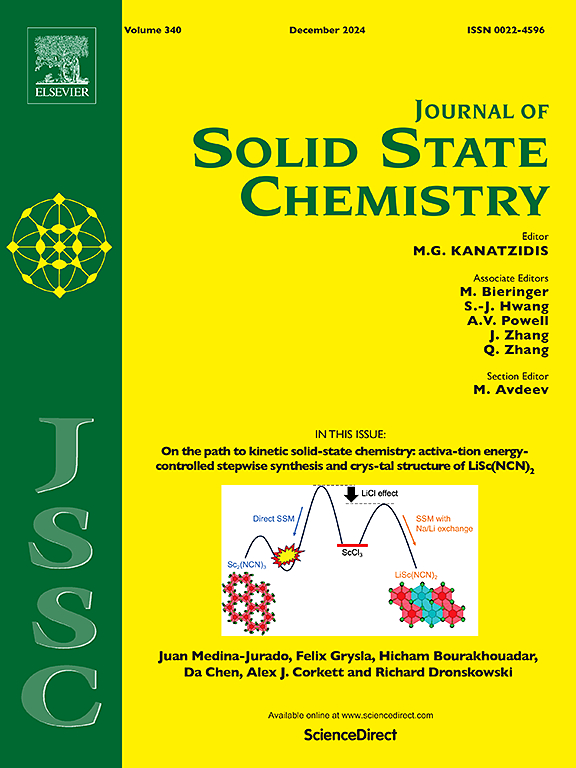Interfacial engineering of the hetero-coordinated Ru–O-M clusters in MOF/LDH structures for boosting urea-assisted water splitting
IF 3.2
3区 化学
Q2 CHEMISTRY, INORGANIC & NUCLEAR
引用次数: 0
Abstract
Urea oxidation reaction (UOR) assisted water splitting has attracted tremendous interests for efficient hydrogen production, but the sluggish reaction kinetics still hinders its extensive application. Herein, the well-defined Ru clusters anchored on metal-organic framework (MOF)/layered double hydroxide (LDH) heterointerface (Ru@MOF/LDH) was prepared via an interface-induced strategy. By hydrolyzing the MOF precursor, confined sites-rich intermediate MOF/LDH heterostructure formed, providing numerous anchor sites to confine Ru. Inspiringly, monodispersed Ru clusters and hetero-coordinated Ru–O-M bonds successfully fabricated on the heterointerface between MOF and LDH. Benefiting from the well-designed Ru clusters, Ru–O-M bonds and multicomponent synergistic effect, the blossom-like Ru@MOF/LDH exhibited outstanding activities for hydrogen evolution reaction (HER) and UOR bifunctionality in alkaline electrolyte. Optimized Ru@MOF/LDH displayed an ultra-low overpotential of 84.7 mV for HER to reach 10 mA cm−2 and only with the potential of 1.44 V to achieve a current density of 100 mA cm−2 for UOR. For a two-electrode electrolyser, Ru@MOF/LDH drove a urea-assisted water splitting to reach 10 mA cm−2 at a low cell voltage of 1.4 V, which was superior to most of the reported LDH-based catalysts. This work provides profound insights for designing the MOF-based heterostructure electrocatalysts, further improving catalytic performance.

求助全文
约1分钟内获得全文
求助全文
来源期刊

Journal of Solid State Chemistry
化学-无机化学与核化学
CiteScore
6.00
自引率
9.10%
发文量
848
审稿时长
25 days
期刊介绍:
Covering major developments in the field of solid state chemistry and related areas such as ceramics and amorphous materials, the Journal of Solid State Chemistry features studies of chemical, structural, thermodynamic, electronic, magnetic, and optical properties and processes in solids.
 求助内容:
求助内容: 应助结果提醒方式:
应助结果提醒方式:


